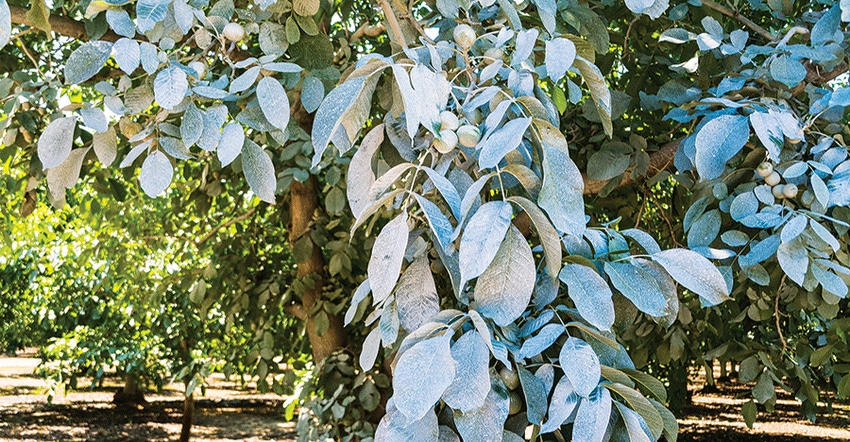
Considered a “minor, occasional pest,” with little to be concerned about, University of California researchers are now looking harder into an infestation of the Pacific flathead borer (PFB) in San Joaquin County walnut orchards.
Dr. Jhalendra Rijal, University of California integrated pest management (IPM) advisor, is looking at various discoveries of PFB in walnuts near the community of Farmington, gathering information for what could become a multi-year study.
He says university researchers know little about the pest, which bores itself into the wood of trees. It can girdle and kill young trees; in older, more mature trees, the wounds tend to cause limb dieback and other less-than-lethal results.
The pest tends to attack trees through pruning wounds or sunburn damage. Research shows that PFB overwinters in the wood and appears in spring. Beetles begin to emerge about April, but do not immediately begin laying eggs. Females tend to choose weak portions of the tree to lay eggs, thus allowing larvae to eventually feed on the cambium.
It does not appear that the pest favors specific varieties of walnut; infestations have been found in Tulare, Chandler, and Howard varieties. Rijal stresses that trees more susceptible to sunburn should be closely monitored and managed for such stressors.
MANAGEMENT OPTIONS
The UC IPM website specifically tells growers: “Do not apply pesticides for this pest.” Rijal explains that there may not be labeled products for the pest, and as such, more careful orchard management is necessary to prevent giving it a pathway to the wood. It is not known to bore into fruit or nuts.
Protecting orchards against sunburn, managing pruning wounds and perhaps even managing Phytophthora (this has not been tested yet, Rijal emphasizes) is being studied as a means to safeguard trees. Because the pest is opportunistic and seeks weakened tree tissue, this may be effective in helping prevent infestations, he says.
Trees can be treated with a 50/50 mixture of white latex paint and water, painting the trunks to protect them against the pest. Painting trunks is an acceptable practice in certified organic orchards, according to UC IPM guidelines. Other products to protect trees against sunburn can also be used and may be permitted in organic orchards.
Rijal says further work is necessary to better understand PFB. He may begin trials next year and is in contact with other scientists to monitor for and study the insect.
About the Author(s)
You May Also Like






